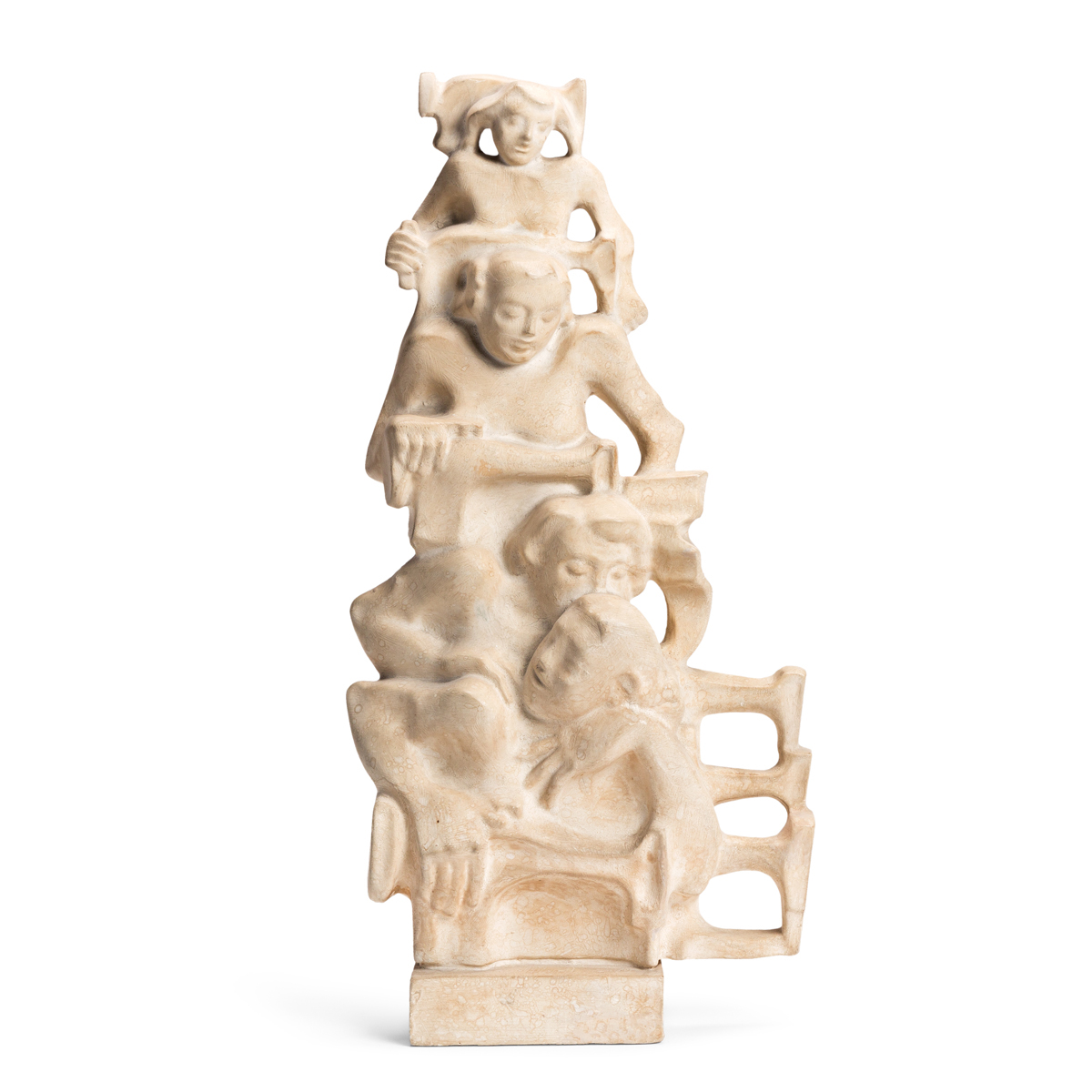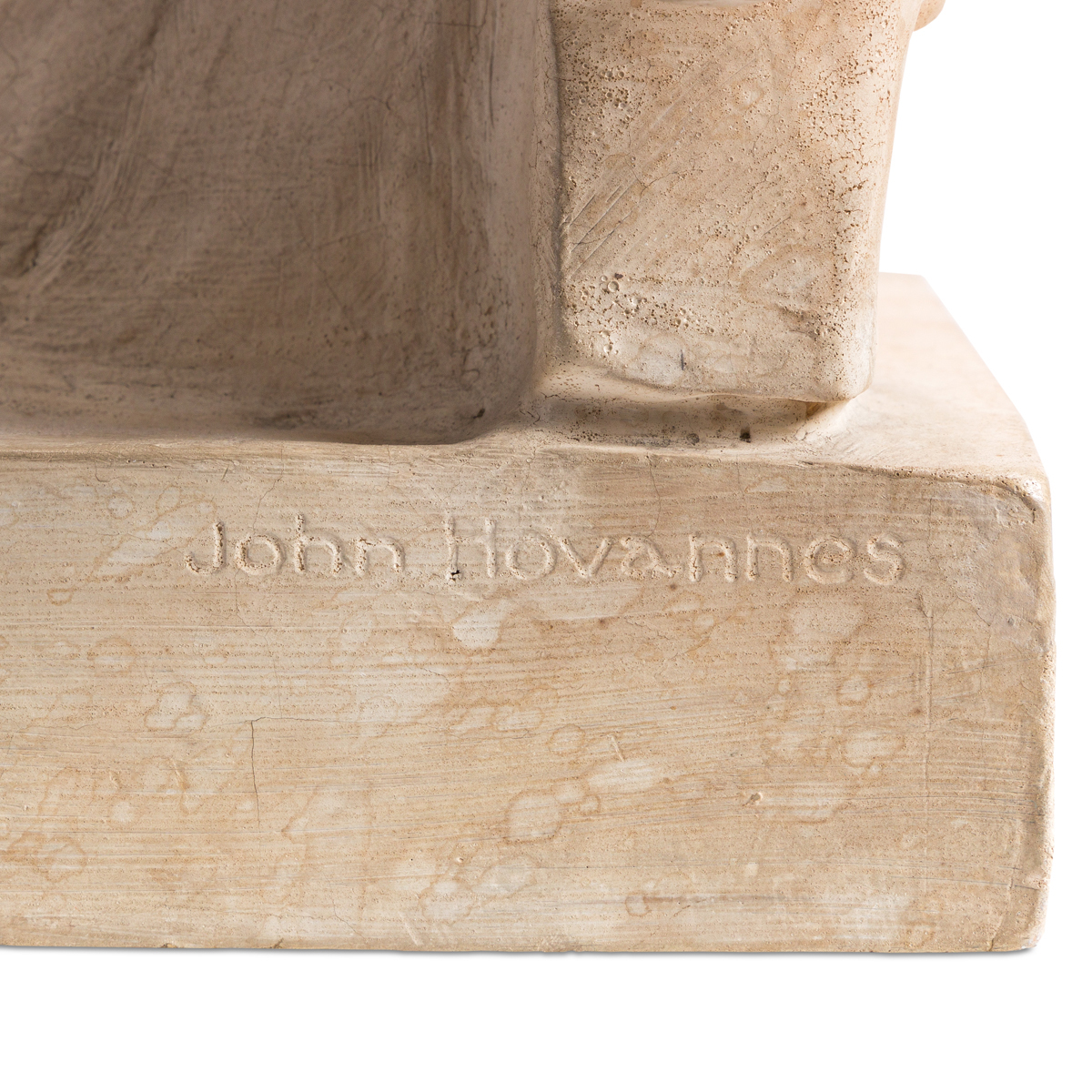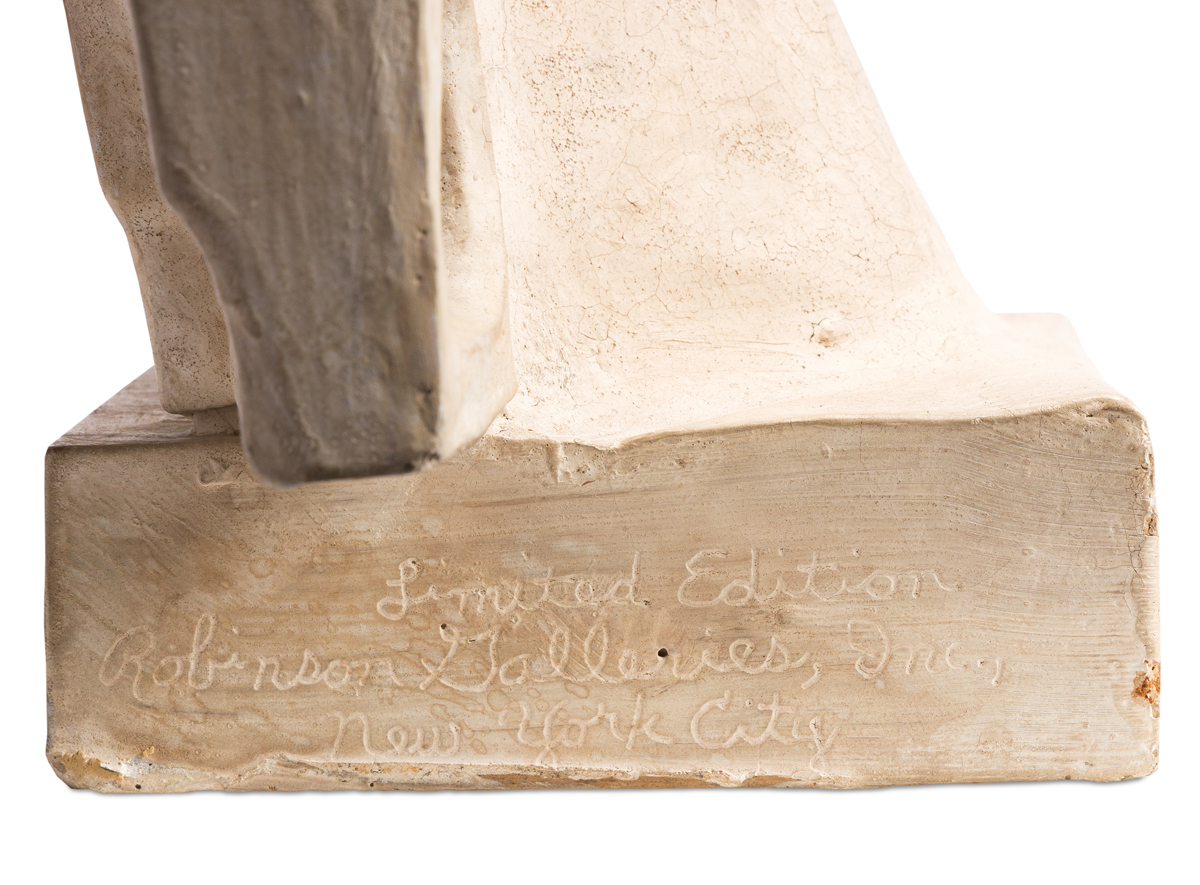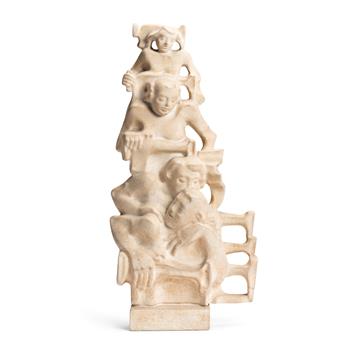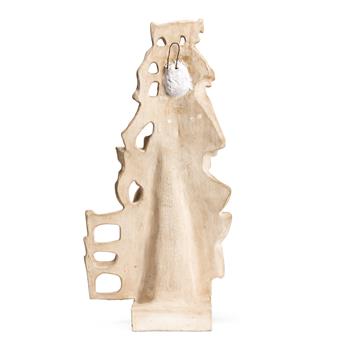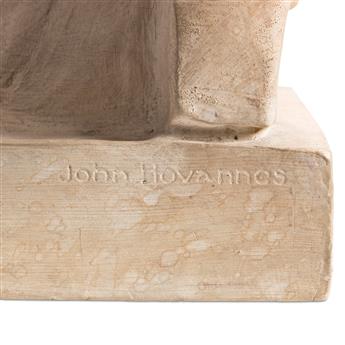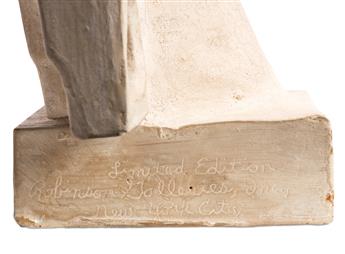Sale 2557 - Lot 132
Price Realized: $ 1,800
Price Realized: $ 2,250
?Final Price Realized includes Buyer’s Premium added to Hammer Price
Estimate: $ 1,000 - $ 1,500
JOHN HOVANNES (1900-1973)
Song of the Shirt.
Pigmented cast plaster. 550 mm; 21 1/2 inches (height). Incised with artist's signature and "Limited Edition Robinson Galleries, Inc., New York City," on the base. Commissioned by Robinson Galleries, Inc., New York. Circa 1939.
Provenance: Robinson Galleries, Inc., New York; private collection, New York.
Exhibited "Sculpture in Limited Edition, Gimble Brothers, New York, circa 1939; "United American Sculptors: First Annual Exhibition at the New School for Social Research," New School for Social Research, New York, January 1939; "City Life in Sculpture," Clay Club Gallery, New York, November 1940; "Annual Exhibition of Contemporary American Sculpture, Watercolors and Drawings," Whitney Museum of American Art, New York, March 11-April 17, 1947, no. 35.
Published "Unionism & Art," The Art Digest, January 15, 1939, vol. 13, no. 8, p. 8 (illustrated) and 28; "Sculptors See the City," The Art Digest, November 1, 1940, vol. 15, no. 3, p. 14; "Whitney Museum Presents Native Sculpture and Watercolors," The Art Digest, March 15, 1947, vol. 21. no. 12, p. 9; Virginis Budny, "Musical Themes in Sculpture: A Forceful Appeal to the 'Imaginative Reason'," Sculpture Review, Winter 2008, p. 24-29 (illustrated).
Hovannes was born in Turkey to Armenian parents. He attended the Rhode Island School of Design, the Copley Society at Boston, and the Beaux Arts Institute of Design. He led an illustrious artistic career, teaching at Cooper Union and in 1940 winning the Guggenheim Scholarship. He favored common-place subjects like laundresses, cotton pickers, and garment workers using a direct carving method in a variety of media. He stated, "I am primarily interested in telling the story of the age in which I am living." Song of the Shirt was also carved in mahoghany. During the 1930s many sewing machine operators had to bring their machines from home to factory each day, and often the easiest method was to carry the machine on their shoulders. While working in the sweatshops, female operators would often ease the hardships of their toil by singing together. The present lot was shown alongside WPA sculptures in a special exhibition of unionized sculptors at New School for Social Research in 1939.
Exhibition Hours
Exhibition Hours
Aliquam vulputate ornare congue. Vestibulum maximus, libero in placerat faucibus, risus nisl molestie massa, ut maximus metus lectus vel lorem.



